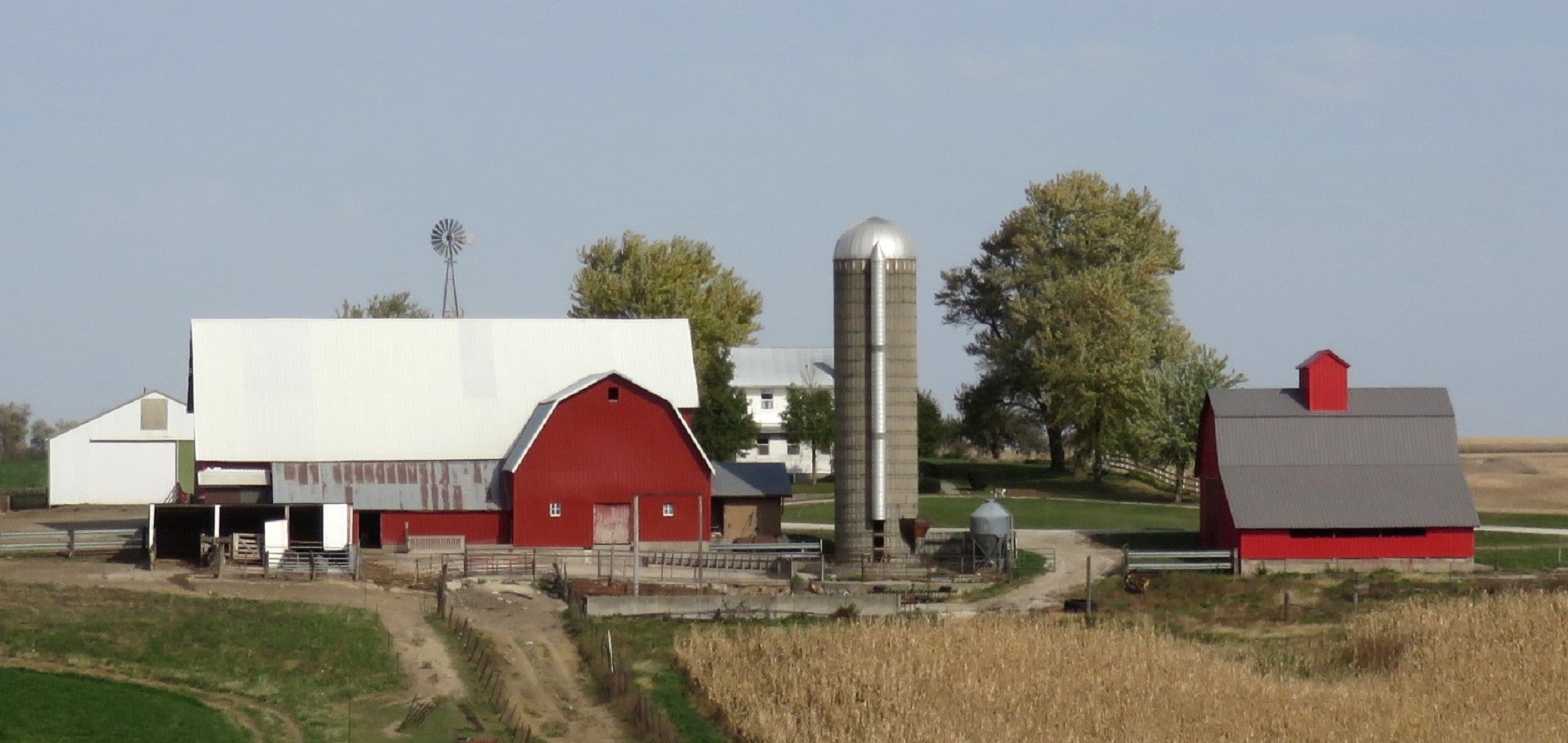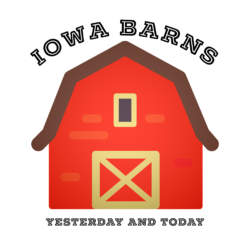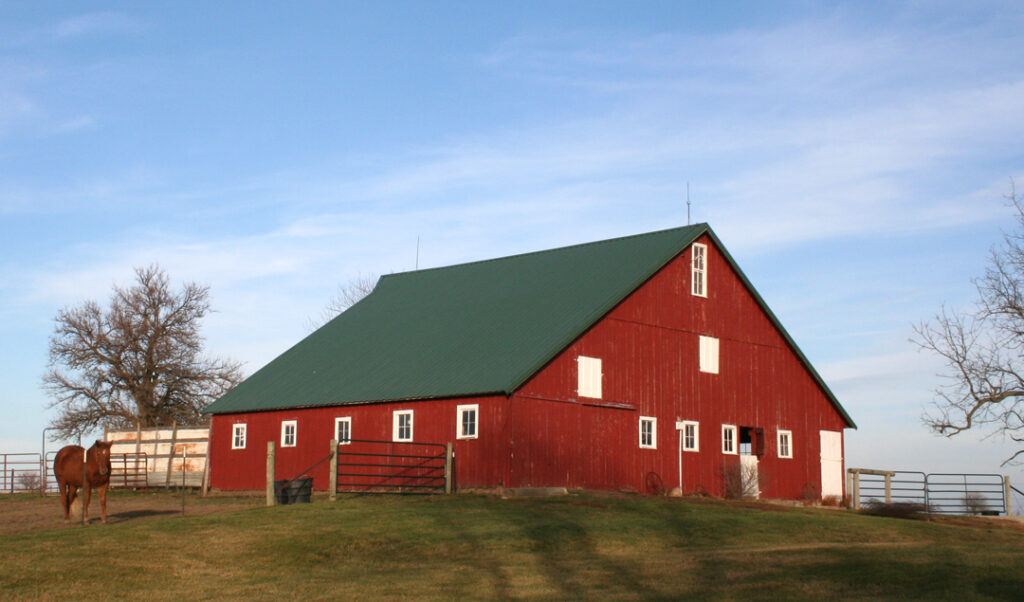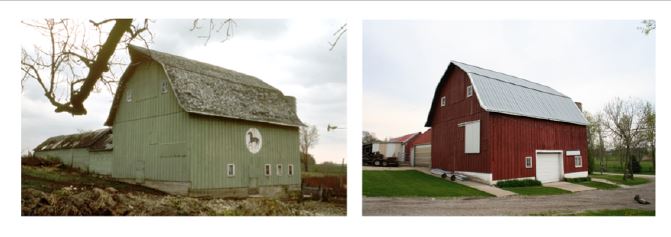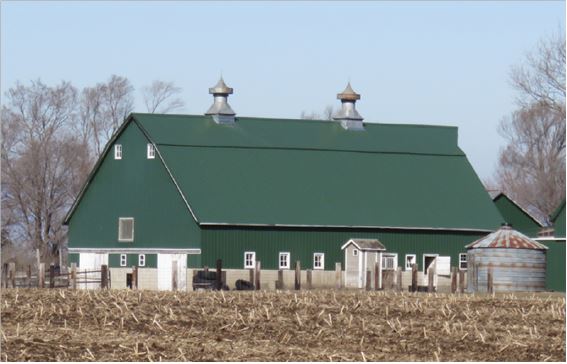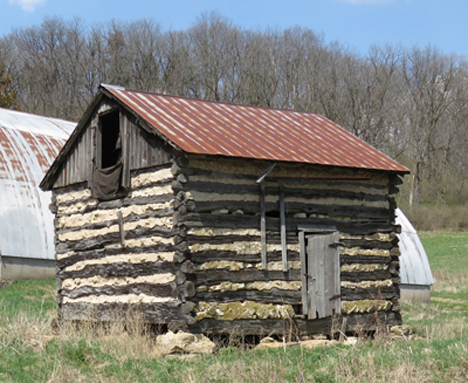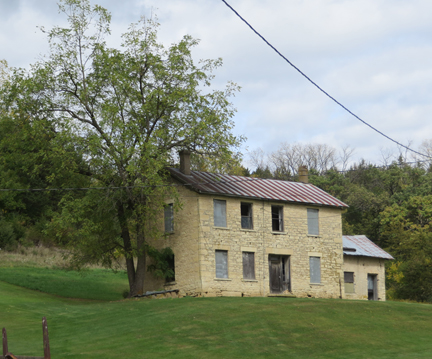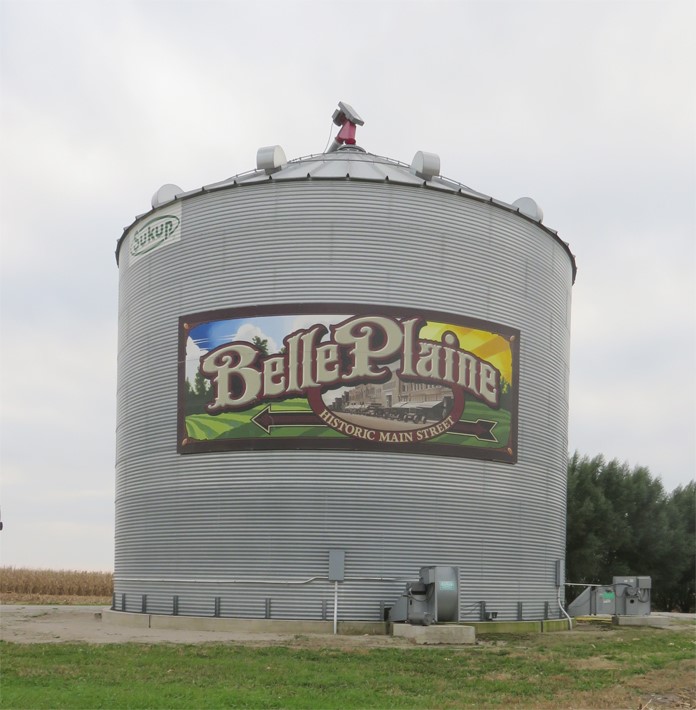
Grain bin becomes billboard. It was there and then it was gone. This gigantic steel bin was painted in 2012 by the Wall Dogs, a group of traveling artists. Located at the Highway 30-County Road V40 intersection four miles north and east of the town, it was destroyed by the derecho on August 10, 2020. A new sign directing travelers to the town will be erected in the near future.
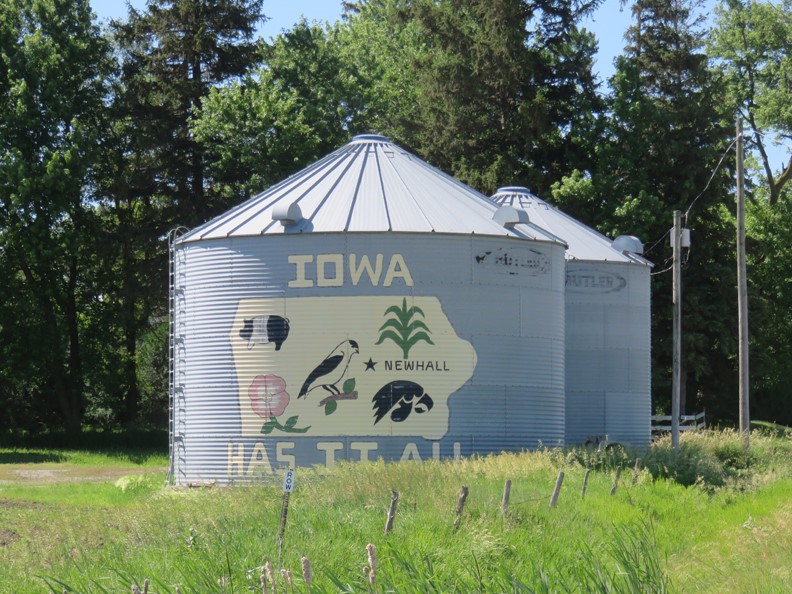
These two, also located along Highway 30, have disappeared. The Iowa scene, painted in the late 1970s by Jerry and Barbara Sonka, their daughter, and a neighbor, photographed in 2016, was destroyed by the derecho. The second bin with an enlarged University of Iowa Hawkeye logo on the side, not visible here, is also gone. They were located two miles south of Newhall at the intersection of Highway 30 and County Road W14. Many grain bins and other buildings were destroyed in a wide path between Marshalltown and Cedar Rapids.
